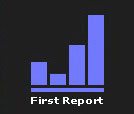First Report Customer Care
All time: 4.6
Latest / Last 30 Days: 5.0
521 Reviews
All time: 4.6
Latest / Last 30 Days: 5.0
521 Reviews
How to Read a Company Profit and Loss and Balance Sheet
A company's Profit and Loss (P&L) and balance sheet provide a snapshot of the financial status of the company. The items on each of these statements reflect different aspects of the company's financial performance and position.
A P&L account shows a company's revenues and expenses over a specific period of time, usually 12 months. It can be used to determine the company's net income or loss for the period.
Turnover, indicates the amount of money the company has received from sales to customers. This revenue can be for producing goods or providing services.
Cost of Sales, this is the cost to the company of raw materials and costs directly associated with producing and selling the company's products or services.
Gross profit is the difference between turnover revenue and cost of sales, and this represents the money available to cover the company's other overheads and expenses.
Operating costs, these are the more general costs associated with running the business, such as salaries, rent, and utilities.
Operating profit is the amount the company has left over after paying its operating expenses.
Interest paid, this shows the cost of loan finance or bank borrowing, if any.
Profit before tax, is the main indicator of profitability, showing the profits resulting from trade before the impact of taxation.
Dividends, these are paid from post-tax profits. If dividends exceed the profit after tax for that period, then there must be sufficient profits in the reserves from prior years in order to pay the dividend.
Net profit shows the company's income after taxes and dividends have been paid. This amount, either a surplus, or loss, is carried forward to the reserves of the balance sheet, where the running total amount is shown as Profit & Loss Reserves or a similar label.
The Profit & Loss Account is not always filed, as under UK filing requirements only large companies are required to disclose this information. The balance sheet is normally filed for most companies. When filed both the P&L and balance sheet information is analysed in our UK credit reports.
A balance sheet is a snapshot of a company's financial position at a specific point in time. It shows the company's assets, liabilities, and shareholders' equity.
Assets, this reflects the positive cash resources that the company has, such as cash, stocks inventory, debtors owing money to the company, and plant and property. Assets will be either ‘fixed’ or ‘current’. Fixed assets are items such as property and plant and equipment, these are not liquid, and are used to operate the business and not for cash flow. Current assets are the liquid assets, and include cash at the bank, debtors expected to pay invoices, and stock that is in the process of being prepared for sale.
Liabilities, these are obligations that the company owes, such as loans, accounts payable, and taxes. Liabilities are categorised as either ‘current liabilities’ or ‘long-term liabilities’. Anything greater than 12 months is long-term. When analysing a balance sheet, the degree to which current assets exceed current liabilities is considered a fundamental measure of liquidity. This liquidity is measured in two ways. Working capital is usually shown on the balance sheet as the item ‘Net Current Assets’. This shows the company's ability to meet its short-term obligations. It is calculated by subtracting current liabilities from current assets. Another measure of liquidity is the Current Ratio. The current ratio is not a balance sheet figure, but a calculation used to check the company's ability to meet its short-term obligations. It is calculated by dividing current assets by current liabilities, where the degree by which the value is in excess of 1.0, or below this benchmark, is a broad indicator of the strength of liquidity.
Shareholders' funds, this item is the same value as Net Assets, and reflects the residual amount of value in the company after liabilities have been paid. It represents the value of the company to its shareholders.
Debt Ratio is not a figure on the balance sheet, but is a calculation that reveals the company's financial leverage, i.e., the extent to which the company is using debt financing. It is calculated by dividing total liabilities (short-term plus long-term) by the shareholders' funds (net assets) figure.
With analysis of the P&L account and balance sheet together, a finance decision maker or credit controller can get a comprehensive view of a company's financial position and performance, and make more informed decisions about extending credit or developing a trading relationship with the company.
See more credit tips and information.
In using this service you agree to the Terms and Conditions
© 2024 First Report Ltd

